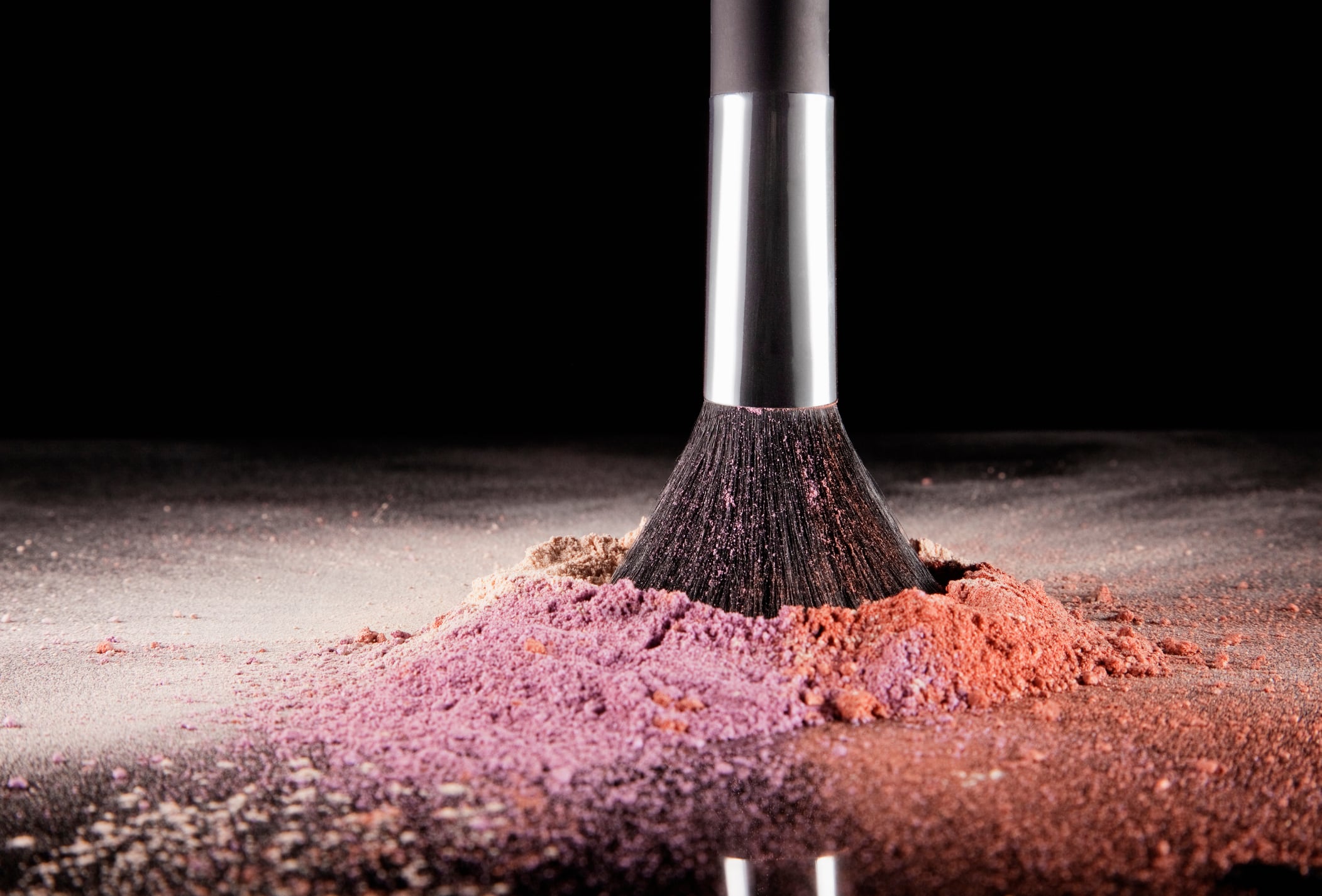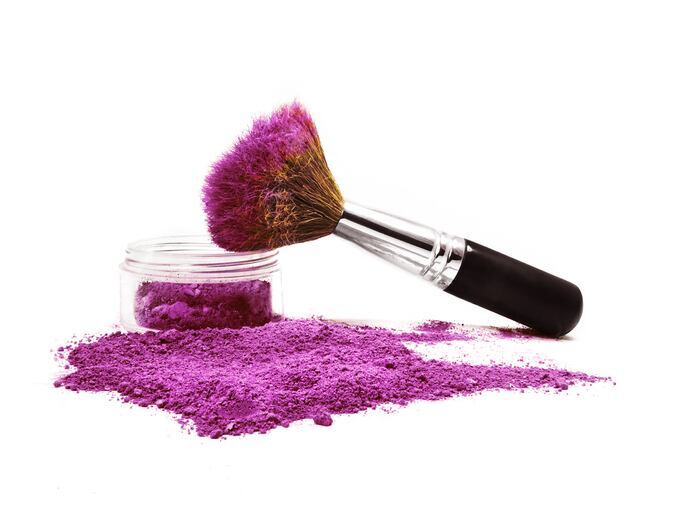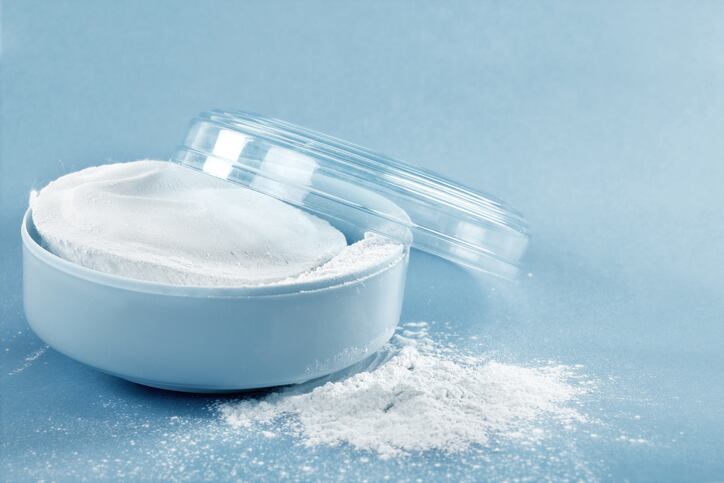As defined by the U.S. Food and Drug Administration, “talc is a naturally occurring mineral, mined from the earth, composed of magnesium, silicon, oxygen, and hydrogen with many uses in cosmetics and personal care products. For example, it may be used to absorb moisture, to prevent caking, to make facial makeup opaque, or to improve the feel of a product.”
Concerns regarding the use of talc in cosmetic and personal beauty products have been pervasive since the 1970s when questions about potential contamination with asbestos were raised. Asbestos is like talc in that it is a naturally occurring mineral, but unlike talc, is a known carcinogen when inhaled.
As a result of these concerns, there has been an overall shift in the cosmetics and beauty care industries away from talc and towards other alternative ingredients, and talc-free labelling has become more common place.
To learn more about the issues with talc as a cosmetic ingredient, CosmeticsDesign spoke with Rani Ghosh, Registered Toxicologist, as well as Stefanie Lendzian, founder of talc-free beauty and personal care brand NAPRIM Naturals, for their insights and expertise into this subject.
CDU: What are the potential dangers of using talc in cosmetic or personal beauty care products?
Stefanie Lendzian (SL): Talc powder can be contaminated with asbestos linked to endometrial and ovarian cancer. Asbestos is a naturally occurring mineral that can be lethal when it enters the body, causing lung cancer, mesothelioma and many other diseases.
Rani Ghosh (RG): The safety of talc has been a pretty lengthy debate, stretching as far back as the 1960’s, because of the alleged association of perineal talc use and the incidence of ovarian cancer. The driver behind this discussion is largely because the relationship between talc and asbestos is commonly misunderstood – and this is critical to understanding why we are where we are with talc.
Where talc is a naturally occurring silicate mineral, mined from the earth, so is asbestos (both have a different crystal structure to one another). There is where it gets a little sticky, as in earth, they can be often located in close proximity to one another and where talc is an inert material, meaning it is chemically inactive, asbestos is a known human carcinogen (a substance that causes cancer), through inhalation.
Therefore, it is important to note, that the human health risk with talc only come into play if talc is inadvertently contaminated with asbestos when mining, so sites should be selected with due diligence, and suppliers should test talc ore to ensure it is asbestos free. When talking about the dangers of using talc in cosmetics, this is accounting for potential contamination with asbestos.
The cosmetic industry has specifications that it must be of cosmetic grade i.e. no detectable fibrous asbestos minerals. If these confirmations can be made, and cosmetic grade talc is sourced and used, then using talc in cosmetics and beauty care products product does not present itself as a risk.
CDU: Are there any available studies that demonstrate the potential ill health effects associated with talc in cosmetics or personal beauty care products?
RG: Where this has been an active area of research for decades now, it can give the notion that the weight of evidence suggests use of talc to adverse health effects. However, with all the research we have to hand, there is no plausible biological explanation, how cosmetic grade talc (asbestos free) applied to the perineal area could lead to the development of ovarian or any other type of cancer. The science still supports the safe use of cosmetic grade talc.
CDU: Is the use of talc as an ingredient in cosmetic and personal care products a prevalent practice in the US?
SL: The FDA continues ongoing research surrounding talc in cosmetics. Since the lawsuit against Johnson & Johnson, the FDA has been monitoring potential safety problems with cosmetic products. In 2022 the FDA tested talc-containing cosmetic products for asbestos on over fifty products, and the results showed no detection in any cosmetic products tested. Therefore, you will not find cosmetic or personal care products containing talc; if anything, you will see a massive emphasis on talc-free products.
RG: Talc is a commonly used cosmetic ingredient globally, because it is pretty good at absorbing moisture, in makeup it’s a great filler on the skin surface to prevent caking, improving the feel of the product and a great base for color cosmetics. It is also abundantly available and cheap to formulate with. A lot of the larger makeup companies are looking to go/have gone “talc-free” not because of health concerns, but because they are aware that a lot of consumers simply don’t want it in their products.
CDU: Is it advisable for consumers to avoid cosmetics and personal beauty care products containing talc due to health concerns and instead search out talc-free alternatives?
RG: There still has been no conclusive scientific evidence that supports a link between the incidence of ovarian cancer/any other cancer through the use of cosmetic grade talc. Speculation is not the evidence regulators look for to enforce a ban, thus no additional measures to restrict the use of talc in cosmetic products are being considered at this stage in Europe or US. However, should scientific data emerge showing a link between the use of talc and cancer, a new risk evaluation would be mandated to reassess consumer safety.
Speculation does however mean, that the safety of talc is under a watchful eye and Cosmetics Europe, the European personal care association, have launched a technical ingredient collaboration related to Talc, with the aim of preparing a safety dossier for submission to the European Commission, under the ongoing safety review process.
In the US, as part of the Modernization of Cosmetics Regulation Act of 2022 (MOCRA), the FDA have been requested to establishing standardized testing methods for detecting and identifying asbestos in talc-containing cosmetic products within the next one year and 180 days. So globally, we have put mitigations in place to continue its safe use.
Where the current science supports its safe use, any large cosmetic company will not be marketing their products as “talc free”, so if consumers still feel uneasy or fearful of talc containing cosmetics, then they can look to see if talc is on the ingredient list of the product and look to avoid it. There is no guidance for consumers to take steps to avoid talc containing cosmetics to avoid adversity to their health, if this were true this ingredient would be banned. We are not allowed to sell unsafe product, EU or NA. So, any steps consumers take is out of a personal preference.
CDU: What are some of the benefits of using talc-free cosmetic and personal care products?
SL: The ingredients used in personal care products to replace talc have many benefits. Arrowroot, for example, is a light fine powder that relieves skin irritations, including rashes, acne and skin sores. It makes the skin softer and smoother while absorbing oil.
Kaolin clay is the most natural and delicate clay, which is great for sensitive skin. Kaolin clay removes impurities and toxins from the pores without clogging them. These are two good choices if you want to absorb moisture and refresh your skin with non-irritating ingredients.
CDU: Are talc-free cosmetic and personal care products more environmentally friendly than products that contain talc?
SL: Yes, talc, free personal care & cosmetic products are more environmentally friendly. Talc is produced from an open pit mine where the rock is drilled, blasted and partially crushed. Dynamite is used for blasting the mining area causing natural habitats to be destroyed.
The contamination of talc with asbestos has been used in construction and manufacturing. Inhaling talc can cause respiratory toxicity, causing lung cancer and other health conditions. Asbestos does not dissolve easily or evaporate. The places with the most exposure can travel and remain in the air and bodies of water. Animals can inhale asbestos particles in the air or ingest these from water. Asbestos does not decompose; therefore, the danger remains for long periods.
CDU: Are talc-free cosmetic and personal care products more cost-effective to manufacture and produce?
SL: Many talc-free alternatives in personal care and cosmetic products are cost-effective—arrowroot powder, corn starch, baking soda, tapioca starch, kaolin clay and zinc.
CDU: Anything else to add?
SL: Many natural plant-based ingredients have significant benefits for the skin and hair that are overlooked. Powder ingredients from plants can have a powerful effect on the skin, with substantial benefits for those struggling with acne, dry skin, rashes, eczema, psoriasis, and so much more.
Powdered personal care products cut out the filler ingredients (i.e., water, preservatives, fragrance, etc.), leaving you with a more concentrated blend of active ingredients. A little goes a long way; the longer shelf life and less waste equals fewer trips to the store for a restock! Ingredients that are good for you and for the environment.





